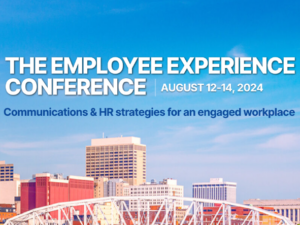Top takeaways from Gallup research on supporting employees’ mental well-being
Five steps for workforce well-being distilled from surveying 200 global HR leaders.

The pandemic has served up many painful lessons for companies around the world.
Perhaps the starkest realization is that notions of “engagement”—and even “productivity”—are useless nonstarters if your employees are unwell. According to Ellyn Maese, a workplace scientist for Gallup and the senior analyst for Gallup’s CHRO Roundtable:
“More and more, HR leaders are realizing how well-being supersedes even employee engagement and productivity as the critical employee barometer.”
Maese notes that “without well-being, engagement and productivity simply fall apart. It has taken the wellness crisis of 2020 to bring this to light, and leaders are walking into 2021 with serious concerns about well-being continuing to crash and the burnout, loss of productivity and turnover that may accompany it,” she adds.
Maese acknowledges that companies are paying more attention to employee well-being in pursuit of better bottom lines in 2021, but which strategies merit the most investment, energy and resources?
Gallup recently gathered insights from more than 200 chief human resource officers (CHROs) to learn how companies are helping employees endure this painful season of history. It came away with five key takeaways on how to help employees thrive in 2021:
1. Expand Employee Assistance Program offerings.
To help bolster resilience amid the ongoing pandemic, Gallup reports that CHROs are:
- Increasing access to medical services under EAPs
- Increasing legal and other types of services
- Increasing the number of counseling or therapy sessions covered by EAPs
- Adding virtual sessions
- Expanding EAP resources globally
Of course, these resources are useful only if employees take advantage of them—or are aware of their existence. So, it’s wise to increase your EAP messaging to boost employee awareness of offerings.
2. Use surveys to identify high-risk groups, target communication, and prove that you care.
Gallup suggests sending consistent pulse surveys to gauge staffers’ sentiments and to spot troublesome areas of frustration. Then, be sure to act on the feedback you receive.
Change can be painful, but employers must orient their new workplace environment to accommodate workers–not the other way around. “In the wake of COVID-19, many organizations are re-examining their employee experience from a more employee-centric perspective, and thinking critically about matters of flexibility, autonomy, and work-life integration to better support their workforce. They see this as a long-term investment that will improve their resiliency and recovery in the post-pandemic era,” Maese says.
3. Use the strengths of individual employees to share resources internally.
It’s time for your all-stars to shine. Gallup’s research shows that CHROs are encouraging and empowering employees to lead virtual yoga sessions, resource groups and other internal social activities.
Gallup writes: “Employers can certainly encourage and share these internal resources, but they can also take action by identifying employee volunteers who would like to be trained as ‘well-being advocates,’ who can connect employees with local community resources.”
4. Upskill managers to have caring conversations.
Managers need support and guidance right now. And perhaps a bit of training. Gallup notes that just asking workers, “What support do you need?” is a good start, but to spark more substantive conversations, managers might need:
- Soft skills training in empathy and communication
- Conversation guides related to mental health
- Adding “well-being check-ins” to quarterly reviews or other formal meetings
5. As a leader, be vulnerable about your struggles.
Authenticity is the watchword for leaders in 2021. Being transparent, and showing a bit of vulnerability, helps build trust. Speaking candidly gives employees permission to do the same, which can spur more meaningful conversations and lead to more robust (and honest) feedback. Leaders who are open about making use of mental health or wellness services can also “create a more authentic culture around self-care.”
Ultimately, success hinges on treating each other with compassion, respect and understanding. This essential truth shouldn’t be a luxury or treated as an ancillary corporate concern. As Gallup writes: “We are surely entering a new era in which corporate well-being and mental-health support are no longer perks or status symbols. They are simply the requirements for doing business.”
(Featured image via Gallup)
Part of our collection of Top Reads of 2021.







